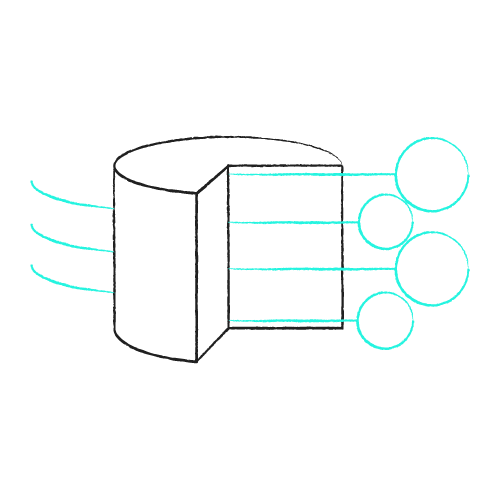
Design Principals
Without divulging trade secrets, the objective herein is not to give precise design details as to how to build the system but to outline those important design principles, which when followed, at least in an asymptotic way, will approach a cost minima. Thus, alluded to herein are the design principles, concepts and such, which have been employed in the design of the Exigent system.
Note: none of this precludes the possibility of multiple localized solutions for this multi-variant problem, especially if the customer parameters are somewhat flexible.
Materials Substitution
Where possible and in as much as possible, alternative material substitutions should be sourced, with the objective of being able to adapt to local availability, supply shortages, design changes, market shifts or other potential disruptions. Material substitutions, if well planned, shouldn’t cause a significant shift in performance or cost.
Long Life System
Obviously, the longer the life the lower the amortized capex per unit of pass-through energy. In contrast to all electrochemical batteries, which require periodic replacement, 98% of the thermal battery will last the lifetime of the system (50 years). As with any system, periodic maintenance is required. However, the storage is predominantly inert, and cannot be easily damaged. In practice there are few limitations to its life; Exigent’s thermal battery will outlast the life of the associated solar plant.


Modularity Principle
Every project is unique in terms of scale, energy, flow, and customer requirements. Every energy storage system is thus unique. From this simple observation it becomes apparent that scalability and modularity are important design constraints.
Exigent’s modular units can be assembled into virtually unlimited scale. No need for re-engineering every project, simply choose the scale that best fits the project. This seemingly small idea has a profound effect on specific storage costs. It should be noted that the smallest practical size for Exigent’s storage is ~100 MWh.
Optimum Temperature
For each system optimization it remains the delicate task to identify the temperature inflection point; that is the point at which any system’s specific cost stops decreasing and begins to increase. The maximum storage temperature, from a technical point of view, has only been regarded as giving a positive effect by increasing its utility, with the goal being a downstream increase in efficiency of the turbine power island. This is correct as far as it goes but it’s only critical if the prime goal is turbine efficiency with a disregard for cost, because it ignores the true goal and the previously outlined cost-efficiency relations.
If we take a market point of view, and switch high efficiency (and with-it temperature) to a dependent variable, then we will nearly always find a different optimization, in the direction of the cost minimum. Identification of this optimum temperature is a difficult, time consuming and sometimes a fluid target. As for Exigent Storage, when integrated with FLS’s H-CST Gen I module, the optimum is 300°C and near 450°C for the Gen II module.


Working Fluid Principle
Closely related to the optimum temperature, the choice of working fluid will affect the entire balance-of-plant, system optimization and operating limits. The price of HEX fluids vary greatly and are strongly related to its max operating temperature.
Take water as the obvious starting point fluid, it’s only really useful below 100°C (neglecting steam as a poor energy storage means). Moving on to mineral oil, a common heat exchange (HEX) fluid, it’s more costly but useful up to 300°C. Still further moving up to synthetic oils, which are about 10x more expensive than mineral oil but useful to 500°C+/-. Lastly molten salt, which is functional to 1000°C +/- but requires very significant infrastructure. With molten salt, it should be noted that the materials costs are significant but less than the balance of system cost due to the use of exotic materials.
In the also ran category: it must be noted that bulk stone with air as the HEX medium, functional to 1000°C, is in principle cheap, considering only the air & gravel. However, in practice the system requires massive heat exchangers and air compressors. This turns out to be the majority of the capex and opex. Thus, in this case it’s the ancillary systems which drive the cost, not the core storage medium.
The point being that the higher the storage temperature the greater the system costs.
